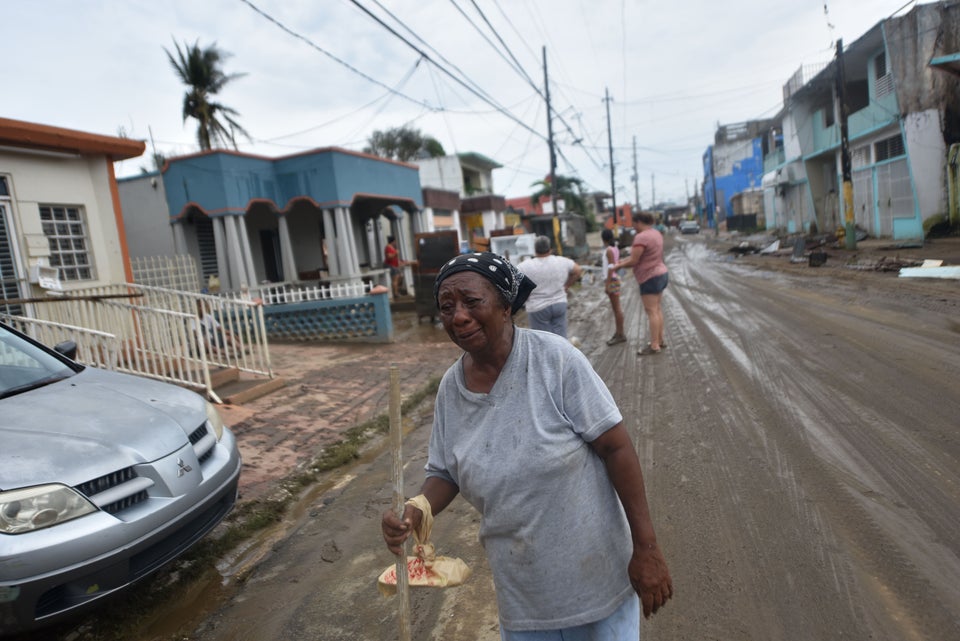WASHINGTON — The 2017 Atlantic hurricane season was one for the books — deadly, destructive and the costliest on record. And for the nation’s meteorologists, it could not have ended soon enough.
“Be gone with you,” Taylor Trogdon, a senior scientist at the National Hurricane Center, posted on Twitter early Thursday.
Thursday marks the final day of the Atlantic season, which officially runs from June 1 to Nov. 30. The final tally: 17 named tropical cyclones, including 10 hurricanes and six major hurricanes that reached Category 3 or stronger.
In a report published Thursday, Dr. Phil Klotzbach, a meteorologist at Colorado State University, described the season as “extraordinarily active.”
“It’s going down as a top ten year for most tropical cyclone parameters that we measure in real-time,” Klotzback wrote in an email to HuffPost.
Among the strongest and most devastating storms were hurricanes Harvey, Irma and Maria.
Harvey slammed into the Texas Gulf Coast in late August as a Category 4 storm, triggering catastrophic flooding in and around Houston. In parts of Texas, it dumped more than 50 inches, breaking the continental U.S. rainfall record. At least 82 people were killed.
Two weeks later, Irma tore through the Caribbean, shattering several records before taking aim at Florida. The Category 5 storm went down as the strongest hurricane ever in the Atlantic Ocean (not including the Caribbean Sea or the Gulf of Mexico) and the first anywhere on Earth to maintain top winds of 185 miles per hour for 37 straight hours. It also ranked among the strongest tropical cyclones measured at landfall anywhere around the globe, as meteorologist Eric Holthaus noted on Twitter.
And before the Caribbean had time to recover from Irma, Maria devastated Puerto Rico and other Caribbean islands, leaving behind “apocalyptic” conditions, local officials said. The death toll in Puerto Rico, now at 58, continues to rise. And more than two months after the disaster, roughly half of the island remains without electricity.
The 2017 season served as an important reminder of just how devastating hurricanes can be, Marshall Shepherd, director of the atmospheric sciences program at the University of Georgia and a former president of the American Meteorological Society, told HuffPost on Thursday. Prior to Harvey, the country went nearly 12 years without a major hurricane (Category 3 or higher) making landfall — the longest period on U.S. record.
“I think we had been in a drought for so long that people really just forgot how destructive, life-altering and society-altering they can be,” Shepherd said. “And to have essentially three major hurricanes just devastate very populated areas, that to me in itself is memorable.”
Shepherd added that the 2017 season carried the mark of climate change, with storms packing an extra punch, and gave America perhaps its first glimpse of what a future of extreme weather events and climate refugees could look like.
“We have to start thinking about, planning our cities and our infrastructure, with extreme weather in mind,” he said.
With damages exceeding more than $200 billion, this season has been pegged as the most destructive hurricane season in U.S. history, according to Weather Underground, which cited estimates from disaster research scientists. That figure includes loses of $114 billion from Hurricane Harvey, $60 billion from Hurricane Irma and $32 billion from Hurricane Maria.
Although 2017 was active, 2005 still holds the record for most named storms (28), named storm days (126.25), number of hurricanes (15) and number of major hurricanes (7), according to Klotzbach’s report.
Below, a look at how other meteorologists marked the end of the 2017 Atlantic hurricane season on Thursday:

